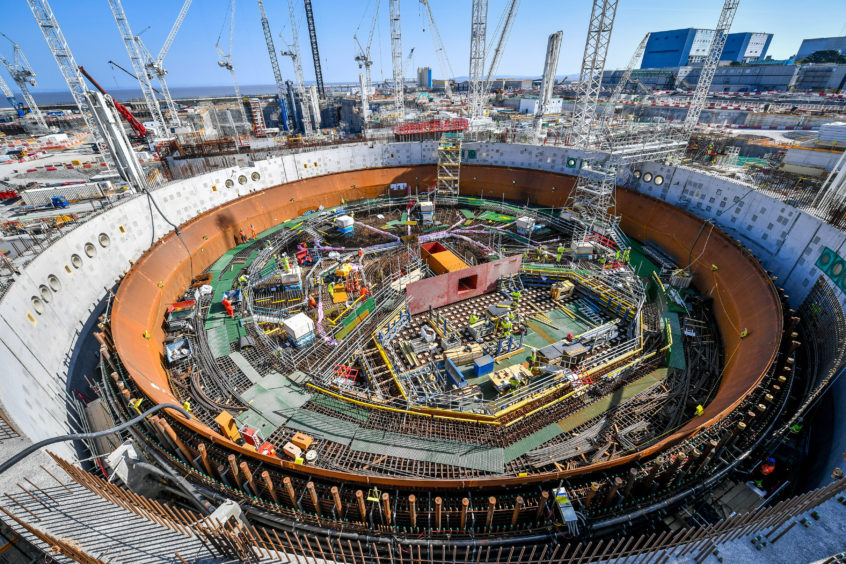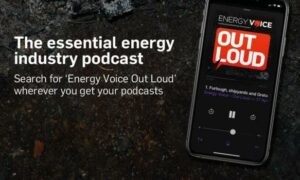The success of the hit 2019 TV series Chernobyl has done the reputation of nuclear power no favours.
Many are sceptical about the energy source and, as Energy Voice’s Ed Reed points out, it doesn’t receive the same fanfare usually enjoyed by the likes of offshore wind and hydrogen.
Nevertheless, nuclear power has been on the go in the UK since the 1950s and Westminster still believes it has a part to play in getting the UK to the holy grail of net zero.
It has set aside £385 million in an Advanced Nuclear Fund to encourage the production of low carbon power, with the aim of unlocking further private sector funding.
Joining Reed in this, the third chapter in a series dissecting the UK Government’s 10-point plan, are Anne Falchi, value for money program manager at EDF’s Sizewell C power station, and Chris Lewis, EY UK’s infrastructure lead, as the team set out where nuclear power fits into the net zero puzzle.
“With a small footprint you can produce a lot of energy”
Nuclear energy is produced by splitting uranium atoms – a process known as fission – which produces heat and in turn steam that can then be used to power a generator.
Because there is no burning of fuel in the process, there are no carbon emissions, though the use of highlight radioactive substances comes with its own caveats.
As already mentioned, nuclear doesn’t seem to have the same “buzz” around it as other clean energy sectors.
This is perhaps perplexing considering its reliability, especially when compared to weather reliant sources, and its already established role in the energy system.
It is currently the largest source of low carbon power generation in the UK, making up 20%, and is “fundamental” for reaching net zero targets, said Falchi.
She said: “You can deploy as much solar and offshore wind as you want and it still won’t be enough to meet the demands for energy and heat. The scaling issue makes nuclear well suited because it is so powerful, although this is also a challenge, and it doesn’t require a lot of land. With a small footprint you can produce a lot of energy.”
It also provides the “stability the system needs” and can directly replace carbon emitting sources, such as natural gas.
In the context of renewables, Falchi said that nuclear should be seen as a “compliment, rather than a competition”, though developers “aren’t too keen” to talk about that just yet.
Lewis added: “It’s about building a system that can power the demand we’ve got at the moment, as well as transport and heat – there’s quite a lot that’s going to come in.
“Clearly, any new power generation capacity that needs to be put in needs to not emit carbon and that’s why I think nuclear should be part of the system.”
“It’s about relearning skills”
As well as concerns about the potential pitfalls of using a volatile chemical element, nuclear has been criticised for being a cash heavy means of producing energy.
EDF’s Hinkley Point C facility is on course to rack up a construction bill of around £23 billion, half a billion more than estimated in 2019.
But, while acknowledging that the nuclear industry’s track record on delivering projects on time and at budget hasn’t been fantastic, Falchi said that “hasn’t always been the case”.
She added: “It’s a matter of learning how to do these things again – collectively we’ve lost these skills. We haven’t built nuclear stations in a long while and we aren’t performing that well in any major infrastructure projects at the moment.
“It’s about relearning skills and that is achievable. Look at offshore wind as a benchmark – the average cost of nuclear energy produced is way below, there’s no doubt about that.
“We are on a journey and the industry needs to perform and relearn the cost reduction that it previously delivered – we can’t be complacent.”
Lewis added that, while power plants are some of the cheapest to run, it’s the high capital costs to build the facilities that are the main issue.
The main challenge, therefore, is “changing the financing structure” to reduce the risk for investors, which will “lower the cost significantly”.
“We’re offering low carbon energy generation but in a system that works for everyone”
One issue that always crops up in discussions about the energy transition is that of local content.
Politicians, industry bodies and unions are all keen to stress the need for workers and communities, particularly in the UK’s former industrial hubs, to benefit from the decarbonisation drive.
In this regard, nuclear power is actually ahead of many other sectors.
For every pound that EDF spends constructing Hinkley Point C, which is due to become operational in 2026, 65% stays in the UK, creating jobs and encouraging economic growth.
Falchi said: “It’s part of the value for money – we’re offering low carbon energy generation but in a system that works for everyone.
“We’re offering long term jobs, training for young people and making sure that all regions of the UK feel the benefit.
“There are nuclear stations across the country and they’re part of the landscape for decades, helping the economy to be fairer.”
By the middle of the next decade, the UK Government hopes to have small and advanced module reactors in operation to put the country at the “cutting edge of the industry”.
Considering the lengthy process involved in establishing nuclear energy plants – Hinkley Point C was first mooted in the 2000s – this is an ambitious target to say the least.
But therein lies the opportunity.
Projects such as Hinkley Point C and Sizewell C are creating a “competitive advantage” for the UK, said Falchi, which could then be exported to the wider world.
Given its longstanding place in the energy mix, nuclear is perhaps not viewed with the same excitement as offshore wind and hydrogen, but its capacity to generate low-carbon baseload power makes it an obvious inclusion in the government’s green industrial strategy.
However, lowering costs will be key to nuclear’s success in a decarbonised energy mix, as noted by Lewis, with change to the financing structure a pressing issue.
EY Insight from Chris Lewis
Nuclear power has a key role in a net zero energy system. It provides always available, zero carbon power.
The UK has committed to a new set of nuclear power stations with over 15 GWH expected over the next 15 years. This represents an investment of over £40bn over the next few years.
We need to learn the lessons from the past, seeking repeatable power plants, reducing risks to secure low cost finance. This will deliver value for money for consumers, with energy costs at or below £60MwH, and reduce the carbon intensity from transport and homes.
In April, the 10 Point Pod will get a sprinkling of showbiz as Reed is joined by Red Dwarf star and host of clean energy channel Fully Charged, Robert Llewellyn. Completing the pit crew for Point 4 – ‘Accelerating the shift to zero emission vehicles’ – will be Rob Fowler, CEO of electric-vehicle firm Volta Trucks.
Subscribe for free to the 10 Point Pod series and listen to the nuclear episode in full.
Catch up with last month’s hydrogen debate here.
Recommended for you











